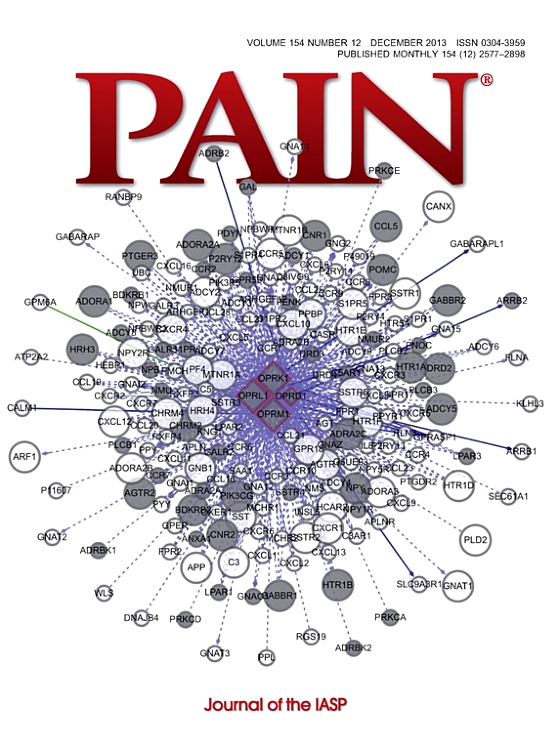法布里病的阵发性疼痛是由热休克蛋白-瞬时受体电位阳离子通道A1轴介导的。
IF 5.5
1区 医学
Q1 ANESTHESIOLOGY
引用次数: 0
摘要
三分之二的法布里病患者因运动、发烧和暴露于环境高温而遭受衰弱性疼痛发作。面对全球气候变化,这些患者面临着更大的与高温相关的间歇性疼痛风险。关于法布里病热致疼痛危机的生物学机制几乎一无所知,也没有可用的临床前模型来研究法布里病。在这里,我们通过将转基因法布里大鼠暴露于环境高温中,建立了法布里病热致疼痛发作的第一个模型。热暴露引发了强烈的机械超敏反应,与法布里病患者报告的时间特征密切匹配。在细胞水平上,热暴露使Fabry背根神经节神经元对瞬时受体电位阳离子通道A1 (TRPA1)激动剂敏感,但对瞬时电位阳离子通道香兰素1不敏感。在法布里病中,通常赋予耐热性的热休克反应受到损害,我们证明了热休克蛋白(HSP70和HSP90)调节TRPA1。引人注目的是,药理学抑制HSP90完全阻止了Fabry病中环境热引起的细胞和行为致敏。总之,这项工作建立了法布里病发作性疼痛的第一个模型,暗示热诱发疼痛发作的热休克反应,并确定了一个新的热休克蛋白- trpa1调节轴。本文章由计算机程序翻译,如有差异,请以英文原文为准。
Episodic pain in Fabry disease is mediated by a heat shock protein-transient receptor potential cation channel A1 axis.
Two-thirds of patients with Fabry disease suffer debilitating pain attacks triggered by exercise, fever, and exposure to environmental heat. These patients face an even greater risk of heat-related episodic pain in the face of global climate change. Almost nothing is known about the biological mechanisms underlying heat-induced pain crises in Fabry disease, and there is no preclinical model available to study Fabry crises. Here, we established the first model of heat-induced pain attacks in Fabry disease by exposing transgenic Fabry rats to environmental heat. Heat exposure precipitated robust mechanical hypersensitivity, closely matching temporal features reported by patients with Fabry disease. At the cellular level, heat exposure sensitized Fabry dorsal root ganglia neurons to agonists for transient receptor potential cation channel A1 (TRPA1), but not transient potential cation channel vanilloid 1. The heat shock response, which normally confers heat-resilience, was impaired in Fabry disease, and we demonstrated that heat shock proteins (HSP70 and HSP90) regulate TRPA1. Strikingly, pharmacologically inhibiting HSP90 completely prevented cellular and behavioral sensitization by environmental heat in Fabry disease. Together, this work establishes the first model of episodic pain in Fabry disease, implicates the heat shock response in heat-evoked pain episodes, and identifies a novel heat shock protein-TRPA1 regulatory axis.
求助全文
通过发布文献求助,成功后即可免费获取论文全文。
去求助
来源期刊

PAIN®
医学-临床神经学
CiteScore
12.50
自引率
8.10%
发文量
242
审稿时长
9 months
期刊介绍:
PAIN® is the official publication of the International Association for the Study of Pain and publishes original research on the nature,mechanisms and treatment of pain.PAIN® provides a forum for the dissemination of research in the basic and clinical sciences of multidisciplinary interest.
 求助内容:
求助内容: 应助结果提醒方式:
应助结果提醒方式:


